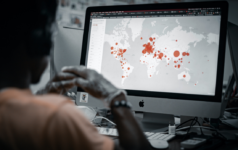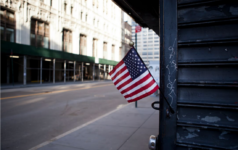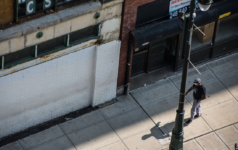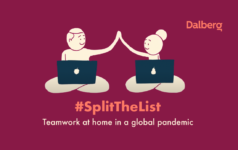Dalberg uses cookies and related technologies to improve the way the site functions. A cookie is a text file that is stored on your device. We use these text files for functionality such as to analyze our traffic or to personalize content. You can easily control how we use cookies on your device by adjusting the settings below, and you may also change those settings at any time by visiting our privacy policy page.
Covid-19 is disproportionately impacting lower-income people of color across the United States. In Washington DC, 46% of Covid-19 cases and 75% of deaths have occurred among Black people, who account for 44% of the overall population. Only 15% of cases and 11% of deaths are among whites who comprise 46% of the overall population.
But initial data suggests expanded testing access is not on track to reach the communities that could benefit most. In Washington DC, despite a rapid response to the pandemic that showed promise, the neighborhoods most impacted by Covid-19 are majority lower income Black neighborhoods – and this burden may not be addressed with widespread scaling-up of testing.
Other cities in the US echo this trend. 69% of cases and 73% of deaths in St. Louis are among Black people, who make up 46% of the population. And in Chicago, 51% of deaths are among Black people (30% of the population).
At the root of the problem are longstanding disparities in access to medical care and historical mistrust of the healthcare system due to racism in medicine. This is further complicated by racism’s contribution to high prevalence of risk factors among people of color, including underlying health conditions, type of work, and living conditions, which result in a higher risk of infection and worse illness severity.
Lessons from the HIV epidemic: Systemic solutions create equity
DC’s response to an over two-decade battle against HIV/AIDS – heralded as a model by the nation – may offer lessons for US cities’ Covid-19 response. DC successfully devised approaches over time to target those most affected by the HIV/AIDS epidemic – predominantly lower-income Black residents. Significantly, testing facilities were concentrated per local authority area – or ward – according to burden. Programs range from collaborating with community-based organizations, to providing services across the care-continuum, including the expansion of support services such as food vouchers and transportation to appointments and use of mobile testing facilities
The results were significant. From 2004-2008, D.C. saw a 415% increase in HIV testing among Black people. Testing progress coupled with connection to medical care and provision of support services led to overall improvements in HIV/AIDS outcomes in DC, including decreases in new diagnoses.
Race reflective data and equitable testing: two steps to overcome inequity
In a research paper, Dalberg draws on lessons from DC’s HIV/AIDS response, and identifies two initial steps to help overcome the disproportionate impact of Covid-19 on people of color. One is the availability of routine data that reflects race, with data on testing, confirmed cases and deaths by race informing programming and decision making. This data is not widely available. Currently race-disaggregated testing is reported in only 4 states, while confirmed cases are reported in 47 states, and death data in 42 states.
Equitable testing is another step – the provision of the expanded testing access necessary for communities most affected by Covid-19. In communities of higher risk, testing facilities in close proximity with convenient hours and fewer restrictions such as primary care referrals, are more accessible, and will improve access to testing as well as serve as a critical entry point connecting those with Covid-19 to healthcare resources.
With these two steps in place, cities would be better able to direct resources towards communities with the highest burden, target policy and put in place stronger containment measures. Individuals who test positive can be cautioned on how to prevent infection spreading to family members and the community. Better testing access could be vital for people of color who are more likely to have co-morbidities and need hospital care sooner.
But equitable testing can be hampered in several ways. For instance, in DC’s majority Black, low-income areas with their higher levels of Covid-19 cases and deaths and higher risk population, there are fewer testing sites, inconvenient testing hours for low-income and/or essential workers, and other requirements such as a primary physician referral preventing access. In scaling-up, accessibility needs are not aligned. This picture of the potential for inequitable access to testing in DC is consistent with many other cities across the country. A heat map of Memphis shows more tests are being conducted in majority white, higher socioeconomic neighborhoods compared to majority Black, lower-income ones. Data from Illinois and Kansas – two of the states reporting testing data by race – also suggest racial disparities in testing.
The time to stem the spread is now
Like the HIV/AIDS epidemic, we know that more testing is needed, especially for the most vulnerable. And as in the thrust of the HIV/AIDS crisis, we must turn to new models to level out access to care. The time is now to create data-informed strategies to decrease access burden and engage hard-to-reach populations through partnerships, enduring public health infrastructure and creative programming – with a focus on holistic community-based care.
Let’s come together to create a transparent picture of who has access to the vital information that could help change the course of the crisis in the U.S. Drawing from the lessons of the past, we can implement the strategies, policies, and connections between organizations needed to provide help where it is needed most.
Click here to read the Dalberg-authored research paper on this topic.











